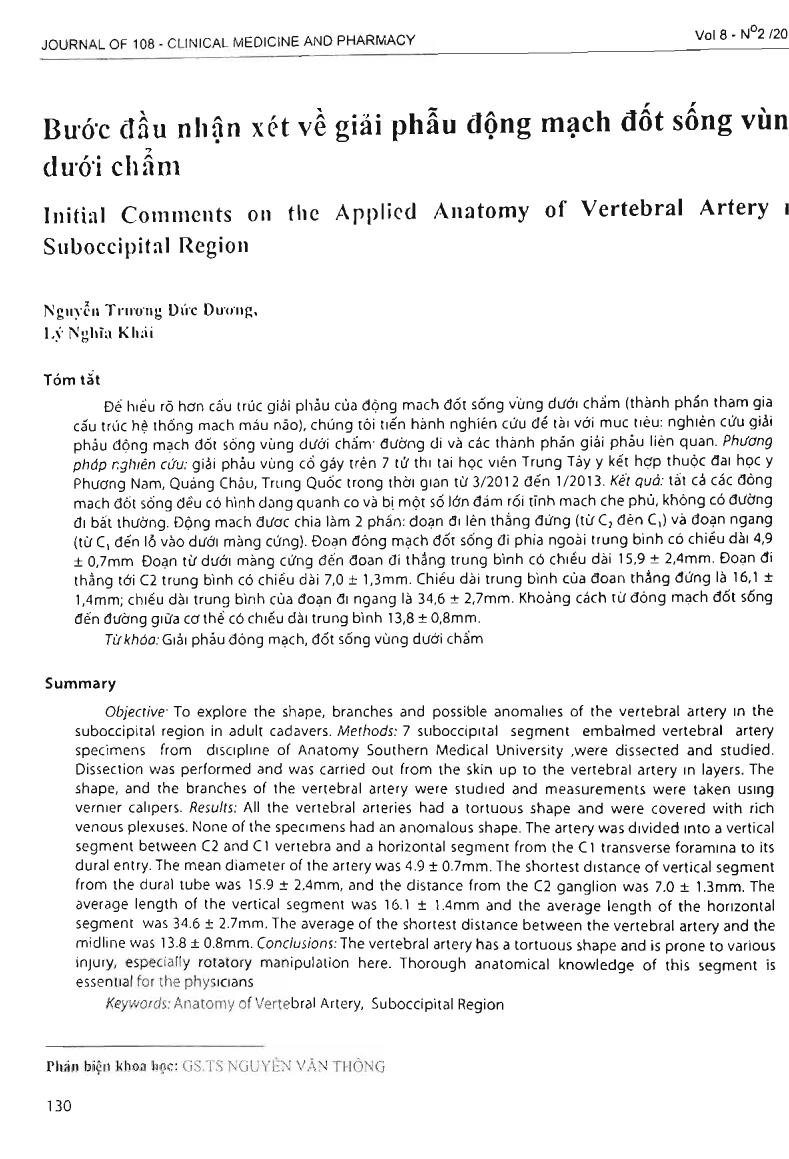
Objective: To explore the shape, branches and possible anomalies of the vertebral artery in the suboccipital region in adult cadavers. Methods: 7 suboccipital segment embalmed vertebral artery specimens from discipline of Anatomy Southern Medical University ,were dissected and studied. Dissection was performed and was carried out from the skin up to the vertebral artery in layers. The shape, and the branches of the vertebral artery were studied and measurements were taken using vernier calipers. Results: All the vertebral arteries had a tortuous shape and were covered with rich venous plexuses. None of the specimens had an anomalous shape. The artery was divided into a vertical segment between C2 and (1 vertebra and a horizontal segment from the (1 transverse foramina to its dural entry. The mean diameter of the artery was 4.9 + or - 0.7mm. The shortest distance of vertical segment from the dural tube was 15.9 + or - 2.4mm, and the distance from the (2 ganglion was 7.0 + or - l.3mm. The average length of the vertical segment was 16.1 + or - l.4mm and the average length of the horizontal segment was 34.6 + or - 2.7mm. The average of the shortest distance between the vertebral artery and the midline was 13.8 + or - 0.8mm. Conclusions: The vertebral artery has a tortuous shape and is prone to various injury, especially rotatory manipulation here. Thorough anatomical knowledge of this segment is essential for the physicians.
- Đăng nhập để gửi ý kiến
